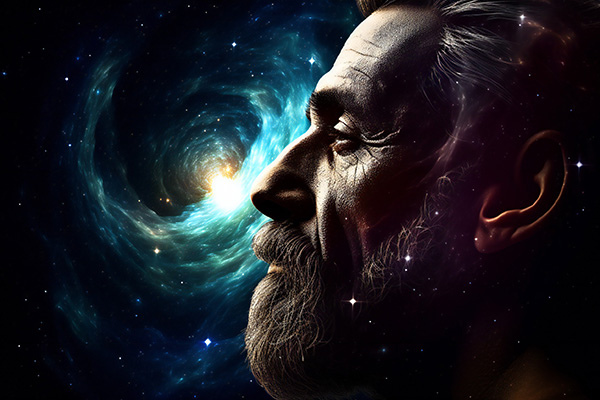druidism
How To Use A Wand In Your Energy Work
 It is not widely known that a magic wand is so much more than a mere fantasy accessory in popular stories like the Harry Potter series andThe Chronicles of Narnia.
It is not widely known that a magic wand is so much more than a mere fantasy accessory in popular stories like the Harry Potter series andThe Chronicles of Narnia.
While popular culture has certainly cast wands in a fun, magical light, their true potential as metaphysical tools in real-world spiritual and energy work is less known and mostly underestimated.
Far from being a fictional artifact, a wand has traditionally served as a conduit for directing intention and channeling energy. When used with respect and purpose, a “magic” wand can be a vital tool in one’s metaphysical practice.
I view my wand as an energy tool to harness and direct intention as a means to bring about change in myself, another person, a pet, or a situation. Whether I’m working directly with someone in a healing session or using it remotely with a photo or personal object, my wand helps me focus healing energy to address blocks, wounds, or even negativity.
In a healing session, I use the wand to direct energy to where it’s needed most. This may mean helping someone release emotional blocks, alleviate physical pain, or transform negative energy.
Wands have a rich history in various cultures and have been used in many ancient civilizations. In ancient Egypt, for example, staffs and wands were used by priests and deities as symbols of authority and power. These objects were decorated with mystical symbols and believed to have protective and healing properties. Similarly, in Mesopotamia, priests and shamans used wands in religious rituals and ceremonies.
From Ancient Mystics To Modern Psychics
 Psychics and mediums have been around since the dawn of human civilization: from the shamans in indigenous cultures, to the oracles of ancient Greece and Rome, the seers and druids of Celtic societies, the sages of ancient China, and the prophets of ancient Middle Eastern cultures.
Psychics and mediums have been around since the dawn of human civilization: from the shamans in indigenous cultures, to the oracles of ancient Greece and Rome, the seers and druids of Celtic societies, the sages of ancient China, and the prophets of ancient Middle Eastern cultures.
Some famous examples include Pythia, the Oracle of Delphi in ancient Greece; the Celtic soothsayer Myrddin Wyllt, also known as Merlin in later Arthurian legends; the Chinese wu (shaman) Jing Fang; Black Elk, the renowned Native American holy man of the Oglala Lakota Sioux people; Isaiah, the renowned prophet of the ancient Near East; and Agastya, the revered Hindu sage and seer.
Throughout human history, in different cultures and societies, there have always been individuals with mystical abilities who held important roles within their communities and served as intermediaries between the physical world and spiritual realms.
They served as conduits of divine wisdom, predicting future events, providing insight into hidden truths, and offering guidance on various matters. They often acted as special advisors to tribal leaders, rulers, and kings, and typically played an important role in the moral and spiritual direction of their people.
The term “psychic” comes from the Greek word psychikos, meaning “of the soul, spirit, or mind.” In Greek mythology, Psyche was the goddess of the soul. Her name literally means “soul” or “breath.” Over time, the term came to encompass aspects of the mind beyond the ordinary.
Simple Energy Work To Balance The Elements
 The ancients believed that the Universe is composed of five elements, namely Earth, Air, Fire, Water, and Spirit (Ether). These classical elements are an important theme in Ancient Greek, Indian and Japanese philosophy, Hermeticism, Hinduism, Buddhism, Medieval Alchemy and Western Astrology.
The ancients believed that the Universe is composed of five elements, namely Earth, Air, Fire, Water, and Spirit (Ether). These classical elements are an important theme in Ancient Greek, Indian and Japanese philosophy, Hermeticism, Hinduism, Buddhism, Medieval Alchemy and Western Astrology.
The elements are therefore also a key aspect of various ancient healing practices and metaphysical traditions. Traditional Chinese Medicine in particular stresses the important role of the elements in healing. Working with the elements is believed to create and maintain energetic harmony and balance which is essential to good health and holistic well-being.
The classical elements are also a key component in Neo-Pagan, Wiccan and Druid teachings and practices. When casting a protective circle in a ritual, for example, the practitioner traditionally calls the four cardinal directions or ‘the four corners’ (North, East, South and West), along with the corresponding elements for each.
The five elements are essentially energies. Energy can be experienced in different ways, however, when the elements are aligned within us, we tend to be able to better handle imbalance and adversity in the outer world.
The energetic harmony of the elements within us can easily get ‘out of whack’ and become imbalanced or blocked due to everyday life events and circumstances, but with increased self-awareness and a few simple self-care habits, you’d be surprised how easily your natural state of energy balance will come back into alignment.